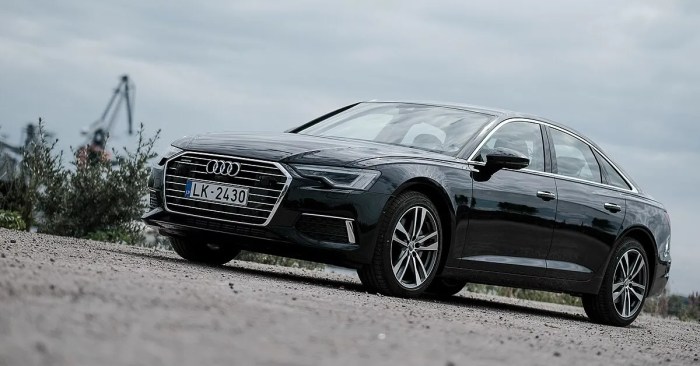Auto Luxury Europe Comparison A Market Analysis
The European luxury car market, a realm of prestige and engineering prowess, presents a fascinating landscape of diverse brands, models, and consumer preferences. This analysis delves into the intricacies of this sector, comparing key players, pricing strategies, technological advancements, and design trends across major European nations. We explore how cultural nuances, economic factors, and environmental concerns shape the perception and purchase of luxury vehicles in Europe. From the subtle differences in what constitutes ”luxury” across countries to the significant price variations of comparable models, this comparison unveils the complexities of this competitive market. We examine the marketing strategies employed by leading manufacturers, analyze the sustainability initiatives they’ve undertaken, and project the future trajectory of the European luxury car industry in the face of evolving technological landscapes and shifting consumer demands. Defining ”Luxury” in the European Auto Market The definition of ”luxury” in the European automotive market is surprisingly fluid, varying significantly across nations and influenced by a complex interplay of cultural preferences, economic realities, and brand perception. While a high price tag is a common indicator, it’s not the sole determinant; factors like heritage, craftsmanship, technology, and even perceived social status play crucial roles in shaping consumer perception. This nuanced understanding is essential for comprehending the diverse landscape of the European luxury car market.The perception of luxury is shaped by a multitude of factors, not simply price. For instance, in countries with a strong automotive manufacturing history, like Germany, heritage and engineering prowess often take precedence. Conversely, in nations where status symbols are more overtly displayed, features like opulent interiors and cutting-edge technology might be prioritized. This disparity creates interesting market segments where a vehicle deemed luxurious in one country might be considered merely upscale in another. Factors Influencing Luxury Car Perception Across European Markets Several key factors contribute to the varying definitions of luxury across European nations. These include historical context, prevailing economic conditions, and prevailing cultural values. For example, the long-standing tradition of handcrafted automobiles in Italy fosters a perception of luxury deeply rooted in artistry and bespoke design. This contrasts sharply with the emphasis on technological innovation and engineering precision often associated with German luxury brands. Economic factors also play a role; in wealthier nations, consumers may prioritize exclusivity and unique features, while in others, the focus might be on value and reliability, even within the luxury segment. Finally, cultural nuances influence how luxury is expressed. In some countries, understated elegance might be preferred, while in others, more flamboyant displays of wealth are commonplace. Examples of Cars Considered Luxury in One Country but Not Another A prime example of this variation is the Fiat 500 Abarth. While it might be considered a sporty, premium hatchback in many European countries, its status as a luxury vehicle would be less pronounced in Germany, where high-performance luxury saloons are the norm. Similarly, a Volvo XC90, often seen as a luxurious family SUV in Scandinavia and the UK, might not hold the same level of luxury prestige in France, where brands like Peugeot and Citroën offer strong competition in the upscale segment. These discrepancies highlight the relative, rather than absolute, nature of luxury in the European automotive market. The perceived luxury of a car is thus highly contextual, influenced by local cultural preferences and competitive landscapes. Key Players The European luxury automotive market is dominated by a handful of iconic brands, each with a distinct history, design philosophy, and target audience. These manufacturers compete fiercely, constantly innovating to maintain their positions at the pinnacle of automotive excellence. Understanding their unique strengths and market positioning is crucial to grasping the dynamics of this highly competitive sector. This section will profile the top five European luxury car manufacturers, examining their market share, key model lines, and unique selling propositions. Top Five European Luxury Auto Manufacturers: A Comparative Overview The following table provides a snapshot of the top five European luxury car manufacturers, considering approximate market share and representative model lines. Note that precise market share figures fluctuate and vary depending on the source and reporting period. This data represents a general overview and should be considered an approximation. Manufacturer Approximate Market Share (Illustrative) Key Model Lines Target Demographics BMW Group (including Mini and Rolls-Royce) ~20% (Illustrative) BMW 3 Series, 5 Series, 7 Series, X5, X7; Mini Cooper; Rolls-Royce Phantom, Cullinan Broad range, from young professionals to established executives; Mini targets a younger, more urban demographic; Rolls-Royce caters to the ultra-high-net-worth individuals. Mercedes-Benz Group (including Smart) ~20% (Illustrative) C-Class, E-Class, S-Class, GLE, GLS; Smart ForTwo Similar to BMW, spanning a wide demographic, from young professionals to older, affluent consumers; Smart targets urban dwellers seeking compact vehicles. Volkswagen Group (Audi, Porsche, Bentley, Lamborghini) ~15% (Illustrative) Audi A4, A6, A8, Q5, Q7; Porsche 911, Cayenne, Panamera; Bentley Continental GT, Bentayga; Lamborghini Aventador, Urus Audi targets a slightly younger and more technologically-focused audience than BMW or Mercedes-Benz; Porsche appeals to driving enthusiasts; Bentley and Lamborghini focus on ultra-luxury and high-performance segments. Stellantis (Alfa Romeo, Maserati) ~5% (Illustrative) Alfa Romeo Giulia, Stelvio; Maserati Ghibli, Levante, Quattroporte Alfa Romeo targets a more passionate and design-conscious buyer; Maserati focuses on a sophisticated and affluent clientele seeking Italian style and performance. Renault-Nissan-Mitsubishi Alliance (Renault, Alpine) ~

